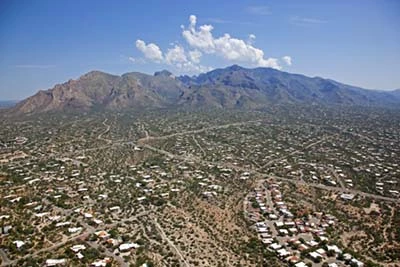
Growth and water are much discussed these days. Will we have enough water to serve Arizona’s growing population? Will water now used by agriculture be the future water supplies of our cities? Should the Central Arizona Groundwater Replenishment District limit future membership? Do increasing demands on finite water supplies call for more regulation of water, both inside of and outside of Active Management Areas? Will a prolonged drought create the ghost (dust!) towns of the future?
The public may not be fully aware that many are at work addressing such questions. Each question is complex and answers to them may change as the robust growth of the Southwest continues.
(A Water Resources Research Center conference will address these issues. Titled “Providing Water to Arizona’s Growing Population: How Will We Meet the Obligation,?” the conference will be held June 20 and 21. See page 3 of newsletter for further details.)
Public officials, water professionals and the public are all concerned with having enough water for the needs of the state. Last year’s Arizona Town Hall concluded that “Arizonans expect a safe and reliable water supply to support Arizona’s diverse and increasing population, sustain our varied economic interests and preserve our wonderful quality of life now and for future generations. Arizonans demand certainty that water will be available to support both consumptive and non-consumptive uses including when they turn on the tap, open irrigation pipes, visit recreation areas and to sustain natural habitats.” With more communities bumping up against water-related constraints, it is appropriate to ask: Are going to be able to meet these expectations?
In most parts of the state, long-range water planning involves incorporating usage of effluent (treated wastewater), often treated to high standards. Not long ago effluent was considered a nuisance, a flow to be disposed of. Many communities suspect water will be available for purchase or lease, be it Indian-owned water or agricultural water. But will it be available and on what terms? In many cases the answers are unknown at this time.
Communities are growing into their Central Arizona Project allocations. Those relying on CAGRD membership to prove an assured water supply face monetary unknowns. As presented about a year ago, the CAGRD Plan of Operation projected the annual replenishment obligation exceeding 225,000 acre feet by 2035, based on projected membership through 2015. The CAGRD has virtually no firm supplies for the water needed to meet its replenishment obligations.
How much will replenishment water cost in 2025 or 2035? No one can make intelligent estimates at this point. Should limits be imposed on future CAGRD membership? The answer to this policy question has significant implications considering CAGRD’s role in facilitating compliance with the renewable supply use requirement of the Assured Water Supply Rules. The CAGRD was created in 1993 because developers and others without CAP subcontracts and/or access to CAP infrastructure worried about meeting the requirements of the impending rules. Present CAGRD members now worry about pressures future membership will place on the cost of replenishment water. Once again, there are many unknowns.
Should water be further regulated within Active Management Areas? While in some quarters regulation is viewed as a nasty concept, uncertainty poses greater troubles to businesses and investors. With several large water utilities updating long-range plans, developers and others perceive more water supply uncertainties now than ten or fewer years ago.
The Groundwater Management Act imposed groundwater use regulations only in the AMAs. With much of Arizona experiencing phenomenal growth the last 25 years, groundwater overdraft has become problematic in non-AMA parts of the state. Watershed and other groups have worked to understand their water supply situations. They have gathered information and data, hoping it will assist them in developing regional water management plans.
The preference is for locally generated approaches to water management as opposed to state-imposed regulations. Laws that require showing water adequacy prior to development approval have been opposed. Opposition has arisen inside and outside AMAs to enacting regulations governing the drilling of wells, which, once built, are exempt from regulation. These proposals have attracted both strong support and opposition. Who is adversely affected by enacting the proposals? Who is adversely affected by failure to act? Often the complete answers to these questions are unknown.
We have all witnessed drought’s serious effects. As communities develop drought and conservation plans, we will continue to grow. Our future options to address drought may be different than present options. We don’t know we are in a drought when it first begins, and we don’t know a drought has ended until some time after its end. Even with this type of uncertainty, we can be prepared for drought if we continue to pursue these planning exercises seriously and not let our guard down because one season’s rainfall is plentiful.
Will water be available for the environment? What water quality implications result from increased use of Colorado River water and effluent? Will we develop cost-effective methods to address arsenic or will the new arsenic standards cause water supply problems in Arizona communities? Will Nevada find sufficient water supplies or will an effort be made to change the laws governing Colorado River water allocation?
One column cannot address all these questions; nor can one conference do justice to them. However, we are going to make an attempt to provide a stimulating dialogue on growth and water at our 2006 Conference. We invite you to attend the conference and join the discussion

